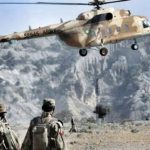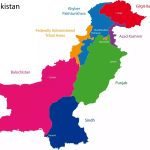India was one of the first victims of organised transnational terrorism, with the sponsorship all from Pakistan. Through the last 30 years, the centre of international terrorism has mostly been the Afghanistan-Pakistan region. The Middle East had and still has its share of terrorists too, while Southeast Asia and Central Asia have had sporadic terrorist activity which has mainly remained localised. The ingredients which make up the environment to support terror exist in plenty in Af-Pak: Badlands, feudal practices akin to serfdom, poor education, limited employment opportunities, ungovernable spaces, failing economies and the adrenaline of radical ideology.
Pakistan’s tryst with internal threats from terrorism commenced after the Lal Masjid intervention by the Pakistan Army in 2007—an attempt by Pervez Musharraf to curb the rise of internal radical churning. That is when the Tehreek-e-Taliban-e-Pakistan (TTP) came into being. TTP is an alliance of militant networks formed to unify opposition against the Pakistan Army.
TTP’s stated objectives are the expulsion of Islamabad’s influence in the then Federally Administered Tribal Areas and neighbouring Khyber Pakhtunkhwa province in Pakistan, and the implementation of a strict interpretation of Sharia throughout Pakistan. TTP leaders also publicly say that the group seeks to establish an Islamic Caliphate in Pakistan that would require the government to be overthrown.
The period 2014–2018 saw the launching and conducting of Operation Zarb-e-Azb by the Pakistan Army after the TTP attack on the Karachi airport. In December 2015, the TTP executed its flagship terror act by targeting Pakistan Army Public School in Peshawar, killing 133 children. TTP remained Pakistan-focused and did not engage much with the India-focused groups such as Lashkar-e-Tayyiba (LeT).
Islamic terror groups across the region were reinvigorated after the Afghan Taliban’s victory over the US. Otherwise, the status which existed in 2018 saw the Islamic State (IS) in withdrawal from Syria and Philippines, the nascent attempts to form IS (Khorasan) with assistance from some Pakistan terrorists, and the supposed defeat of TTP by the Pakistan Army, with TTP’s withdrawal into Afghanistan. After the US withdrawal from Afghanistan in August 2021, the strategic space there opened up for consolidation of many terrorist groups in the areas not under Taliban control.
Pakistan celebrated the Afghan Taliban’s return to power, unmindful of the fact that this could galvanise Pakistan’s own violent insurgency. Those fears have now been realised as the TTP has intensified its attacks in recent months. It is much more confident of defeating the Pakistan forces. The added advantage being that it could now operate from Afghanistan with impunity and support of the mother Taliban group.
The Taliban facilitated a month-long ceasefire between the TTP and Islamabad in late 2021. The truce was announced after weeks of secret talks between Pakistani military officials and TTP representatives in Afghanistan, mediated by the Afghan Taliban. The agreement ended on December 9, 2021, after peace talks broke down, triggering a new wave of TTP attacks in Pakistan. The TTP demanded the release of 100 fighters in Pakistani prisons, while Islamabad only released a dozen or so.
In return, the government demanded a nationwide truce. The TTP also demanded the implementation of Islamic Sharia law in Pakistan’s tribal region, a demand that the government could not accept. After 2018 the TTP was seen for years as a largely spent force. However, TTP fighters are now armed with sophisticated weaponry, including US-made firearms which their Afghan allies seized from Afghanistan’s defeated armed forces.
On March 4, 2022, the IS (Khorasan) attacked a Shia Mosque in Peshawar. The suicide attack killed at least 80 people and injured another 196. Thereafter, there have been a series of terrorist-related incidents, with mostly three to five people killed in each. Incidents of smaller intensity do not register easily in the international community unless they are seen as a continuum of increasing numbers and intensity. Both IS (Khorasan) and TTP have been responsible for these. There is yet no evidence of cooperation between the two but the same cannot be ruled out in future.
What is learnt is that the Pakistani security establishment is not planning a Zarb-e-Azb kind of operation this time. On April 14, 2023, Army Chief General Asim Munir, during a briefing to members of the National Assembly, agreed that terrorists had been allowed to regroup and declared that a three-pronged plan—‘deter, dialogue and development’—was the orientation of the Army to root out terrorism. As per Pakistan media, the Army Chief dispelled the impression of waging a full-scale anti-terror operation in the tribal areas.
Pakistan has been at the receiving end of criticism from various international organisations with regard to its human rights record and the use of terrorists as a weapon system. Perhaps it is trying to ensure it does not draw the ire of the world again. After all, it has to continue seeking aid and assistance to see it out of the woods on the economic front. Many times, such assistance comes loaded with conditions.
However, the concept of using engagement and soft power against established terror groups without first reducing their kinetic capability is flawed and could land Pakistan deeper into the morass. The Army needs to define the term ‘deter’ more clearly to both the terrorists and the troops. The Army succeeded kinetically in Zarb-e-Azb but failed to follow it up adequately with engagement and development. A certain threshold in reduction of terrorist activity will need to be achieved this time too before non-kinetic ways are sought.
For now, India may not be affected because the TTP itself has no India focus and the Afghan Taliban has shown no propensity to treat India as an enemy. However, the Pakistan Army may seek the services of the India-focused groups to assist it to neutralise the TTP. The payback for that will be a blind eye towards their activity against India. The potential return of sponsored terrorism to India in one form or the other remains in the mode of ‘marking time’. Preparing ourselves for it seems inevitable and remains our best option.
Lt Gen Syed Ata Hasnain (Retd)
Former Commander, Srinagar-based 15 Corps. Now Chancellor, Central University





Comments